Tag: Legs
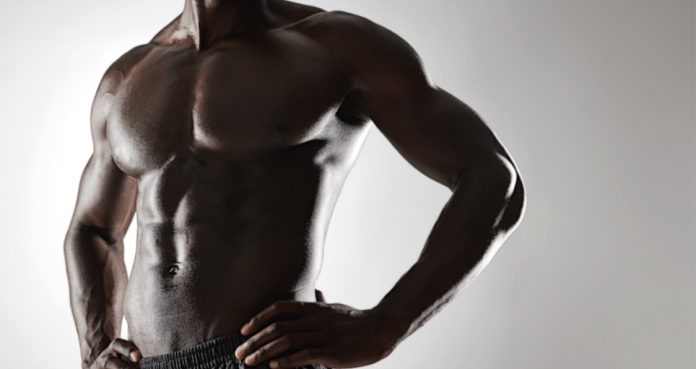
Use The Cable Pull Through For Increased Strength & Gains
Ultimate strength.
Many people out there are looking to build some great, quality muscle in order to be as shredded as their favorite superhero. It’s only natural that anyone influenced by comics and television would want to look like their favorite action hero. Think about it. There’s no doubt that when many of you first saw Predator or The Terminator with Arnold Schwarzenegger your thought process by the end of those movies was, “I want to look like that!”
There’s no shame in that at all. Every bodybuilder needs a spark that will get their engines revving. But sometimes focusing purely on aesthetics right out of the gate can end up backfiring in the long run. Building quality muscle is great, but what’s equally as important is not only building muscle that looks great, but that serve a higher purpose in your overall fitness. Building functional strength should be just as high a priority as getting ripped abs or bulging biceps.
There are plenty of ways you can build up functional strength. There are deadlifts, a perfect pull exercise, there are squats, the absolute king of all lifting exercises, but there’s perhaps one that many lifters never really consider… the cable pull through.
Sure at first glance it may seem to be some useless exercise, more like a fad than anything that can be of use for a bodybuilder or weightlifter. But in reality this movement is a truly classic exercise that many strength athletes have been using for years in order to gain increased strength. So why is the cable pull through such an effective exercise?
Stronger Posterior Chain
One reason this exercise should be in your regimen is because it gets your posterior chain in great condition. That means your hamstring, glutes, lower back, and even calves are worked by performing this exercise. It’s truly helpful in strengthening the lower body and core as well, so it can help you in other lifts.
Improved Squat and Deadlift
Speaking of improving your lifts, the cable pull through is great for giving you a stronger squat and deadlift. Because the exercise improves lower body strength as well as core strength, lifting more weight with the deadlift and squat is a given. It’s certainly a great exercise to use if you plan on hauling increased weight.
Easy to Learn
Perhaps the greatest benefit to using the cable pull through is that it’s extremely simple to learn and master. It doesn’t require too much to actually get the movement down. The form is fairly simple and because of that it’s an exercise that can be easily added to your routine.
Is the cable pull through apart of your training routine? Let us know in the comments and forums. Also, be sure to follow Generation Iron on Facebook and Twitter.
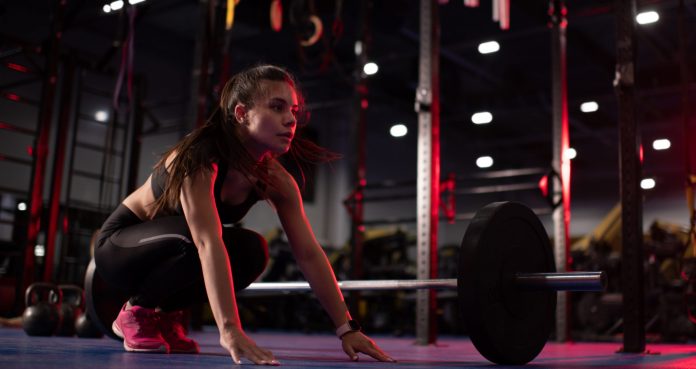
How The Barbell Burpee Will Increase Full Body Strength
This variation of a traditional burpee is great for a workout.
The burpee alone is a challenging workout, let alone adding a bar. One that is comprised of both strength and cardiovascular movements, this workout is the perfect bodyweight exercise to increase full body strength and increase endurance. The burpee is further proof that bodyweight exercises can be just as demanding as any with weights.
But the barbell burpee is unique in that it adds additional elements to an already difficult exercise. Working with a combination of traditional burpee movements including a squat and a pushup, the barbell burpee adds the extra component of a power clean and push press with the barbell to make this is a highly effective exercise to do with a bar.
Used as an aerobic exercise in combination with strength training, the barbell burpee will increase cardio, strength, balance, and flexibility to give you an all-in-one workout to help burn fat and keep you on your feet and working your chest every time for however many reps you want.
Although difficult, the barbell burpee has great benefits and is worth adding to your fitness regimen. Able to attack all of your muscles, including your legs, glutes, core, back, chest, arms, and shoulders, along with the ability to raise your heart rate and get you breathing hard, this burpee is the perfect compound exercise to do with a bar each time.
For those looking to burn fat and increase endurance, as well as aid in power performance, the barbell burpee is great for athletes of any kind. Working many muscles at once also allows you less time working out with the barbell burpee.
All-Around Workout
The barbell burpee allows for increased strength in a variety of muscles including your lower body and upper body. Your legs and glutes are targeted during the jump back into a pushup position as well as the start to the power clean portion of the exercise. Once on the ground, your shoulders provide support as you descend into that all too familiar pushup using the bar as a point of support, especially with the jump up.
With more balance required for the burpee, your core activates and your arms and chest join the workout until that pushup is done as part of this burpee. The fun begins when you lift the barbell into a push press and rely on your fitness to take over as you lower the bar and continue with more reps.
By adding weight, your overall strength increases significantly as opposed to sticking with just your bodyweight (1). As a complex compound exercise, the barbell burpee is sure to fire you up on all cylinders and those gains will really show.
Promotes Fat Burn
As a physically demanding exercise, the barbell burpee is one that will burn off loads of calories, only supported by the fact that so many different muscle groups are being worked. With the ability to increase endurance, your metabolism will work harder for you and your ability to burn more calories will only intensify (2).
Fat loss happens when you consume less than you burn and while dieting can be tricky, the barbell burpee is one exercise to give you a great boost in calorie loss to start you on the right path towards fat loss and the jump and cardio portion of this is great for that.
Increases Endurance
When it comes to increasing your endurance and lung capacity, this workout is one that will do the trick. While running, cycling, or other cardio exercises will get you there as well, the barbell burpee is one that will boost your endurance while at the same time increasing strength and muscle growth (3). A long session of barbell burpees can be all you need for a good day’s work in the gym.
As fatigue sets in, your endurance will allow you to work longer and harder in all other aspects of your training and athletic performance. Along with working your circulatory system, muscular-skeletal system, and central nervous system, the barbell burpee will give your cardiovascular system a great boost to ensure a more effective and longer-lasting lift to add to the rest of your workouts to keep your working hard.
Enhance Explosive Power
Along with increased strength and endurance comes the ability for more power and explosiveness with workouts and competition. Barbell burpees will target your fast-twitch muscle fibers which allow for shorter bursts of speed and power (4). The back and forth jumping into and out of the pushup position mixed with the power of the press at the top will help generate increased speed and power for those looking to get the edge in their workouts.
Having speed and power is not only important for sprinters or jumpers, but for anyone looking to step their game to the next level and this burpee is great for that as you get moving on your hands and feet for a great workout to keep your gains flowing.
Time Efficient
Barbell burpees are time efficient since they include multiple muscles in many muscle groups, as well as targeting your cardio. While you do need a barbell for the barbell burpee, if one is not available, then a traditional burpee will provide almost all of the same benefits. For those who work or feel tight on time in the gym, adding barbell burpees to your workout routine is somewhat of a must.
You will look great, feel better, and know that even if you spent minimal time in the gym and more time off your feet, that you accomplished more with a barbell burpee to keep you doing things you love and start seeing gains.
How To Perform The Barbell Burpee
You will need a barbell and whatever desired weights you want. Place the barbell on the ground and grip the bar with your hands slightly more than shoulder width apart. Kick your legs back into a pushup position and lower to the bar. Push back up to complete the pushup and take your hands off the barbell.
Once on your feet, execute a power clean by lifting the bar to your waist, thrusting to your chest and completing a push press over your head, driving through your feet. Lower to the ground and repeat from the beginning. Keep a tight core and good form throughout to avoid strain or injury from this burpee exercise and rest is important to start seeing growth with all your reps.
Wrap Up
Burpees are never fun and can offer a real challenge for those still working on their fitness. But burpees are a great overall body exercise to get lean and put on muscle while also building a great foundation for endurance. Adding a barbell to the traditional burpee will only add to the fun and increase your gains. The barbell burpee can be challenging and will require balance and flexibility.
You will get better at the barbell burpee and be more fit, only encouraging those gains and increasing your confidence. Don’t let this deter you from maximizing your gains and allow yourself to thrive by adding the barbell burpee to your workout regimen so the rest of your workouts only add to it.
Let us know what you think in the comments below. Also, be sure to follow Generation Iron on Facebook, Twitter, and Instagram.
*Images courtesy of Envato
References
Baker, J. S.; Davies, B.; Cooper, S. M.; Wong, D. P.; Buchan, D. S.; Kilgore, L. (2013). “Strength and Body Composition Changes in Recreationally Strength-Trained Individuals: Comparison of One versus Three Sets Resistance-Training Programmes”. (source)
Ratamess, Nicholas A.; Rosenberg, Joseph G.; Klei, Samantha; Dougherty, Brian M.; Kang, Jie; Smith, Charles R.; Ross, Ryan E.; Faigenbaum, Avery D. (2015). “Comparison of the Acute Metabolic Responses to Traditional Resistance, Body-Weight, and Battling Rope Exercises”. (source)
Kazior, Zuzanna; Willis, Sarah J.; Moberg, Marcus; Apro, William; Calbet, Jose A. L.; Holmberg, Hans-Christer; Blomstrand, Eva (2016). “Endurance Exercise Enhances the Effect of Strength Training on Muscle Fiber Size and Protein Expression of Akt and mTOR”. (source)
Serrano, Nathan; Colenso-Semple, Lauren M.; Lazauskus, Kara K.; Siu, Jeremy W.; Bagley, James R.; Lockie, Robert G.; Costa, Pablo B.; Galpin, Andrew J. (2019). “Extraordinary fast-twitch fiber abundance in elite weightlifters”. (source)
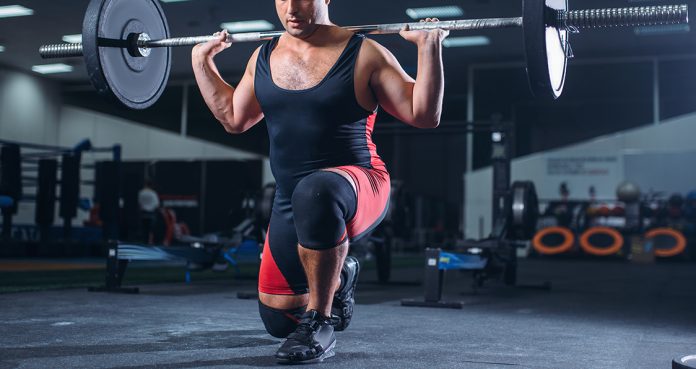
Crazy Workout To Build Your Hams and Glutes
Develop Your Hamstrings and Glutes With This Workout
Posterior (the muscles you can’t see in the mirror directly) can be the hardest to develop as it’s difficult to establish a mind-muscle connection with muscles you can’t see while training.
Pancakes look great on a plate and not in jeans. If you have non-existent hamstrings and glutes, this workout will help put an end to your suffering. Leave no stones unturned while following this workout.
Dumbbell Sumo Squat – 3 Set 15-12-10 Reps
Squats are arguably the best leg building exercise. In this workout, you’ll be performing the dumbbell sumo squats as they are better at targeting your hamstrings and glutes as compared to the conventional squats.
For the dumbbell sumo squat, stand on a couple of aerobic steppers to create a deficit between yourself and the floor. Hold a dumbbell with your arms fully extended towards the floor. At the bottom of the movement, the lowest part of the dumbbell should go below the top of the steppers.
Barbell Hip Thrusts – 3 Sets 15-12-10 Reps
Barbell hip thrusts are one of the most underutilized exercises. Most people make the mistake of overloading the bar and following a small range of motion. Don’t let your ego ruin the exercise and use weights with which you can follow the complete range of motion.
The barbell hip thrusts focus primarily on developing your glutes. At the top of the movement, your quads and upper body should be in a straight line while your lower legs should be perpendicular to the floor.
Leg Curls – 3 Sets 20-15-10 Reps
Leg curls are a staple in most leg training workouts but many people leave gains on the table by performing the exercise incorrectly. While performing the leg curls, place your ankles under the pad so they are a fist’s distance apart.
Lift the weight in an explosive manner. Hold and squeeze your hamstrings at the top of the movement for a couple of seconds. Return to the starting position with a slow and controlled movement. Repeat for the recommended reps without resting at the bottom of the movement.
GHD Extensions – 3 Sets 15-12-10 Reps
We can thank CrossFit for bringing the GHD extensions to the mainstream. If you don’t have access to a GHD machine at your gym, you can ask someone to sit on your lower legs while you perform the exercise on a flat bench.
The GHD extensions work your hamstrings and glutes. If you have relatively weaker glutes and hamstrings, you would want to work on them by performing other exercises before tackling the GHD machine.
Good Mornings – 3 Sets 15-12-10 Reps
Good mornings are a golden-era classic exercise. To perform the good mornings, stand with a barbell placed across your shoulders and feet in a shoulder-wide position. Slowly lower your torso by bending at your hips while keeping your knees slightly bent.
The right motion while performing the good mornings should feel like doing the stiff-legged deadlifts but with the barbell on your shoulders instead of your hands. You should also consider using safety bars while performing the good mornings to eliminate any risk of injury.
Which is your favorite hamstring exercise? Let us know in the comments below. Also, be sure to follow Generation Iron on Facebook, Twitter, and Instagram.
*Header image courtesy of Envato Elements
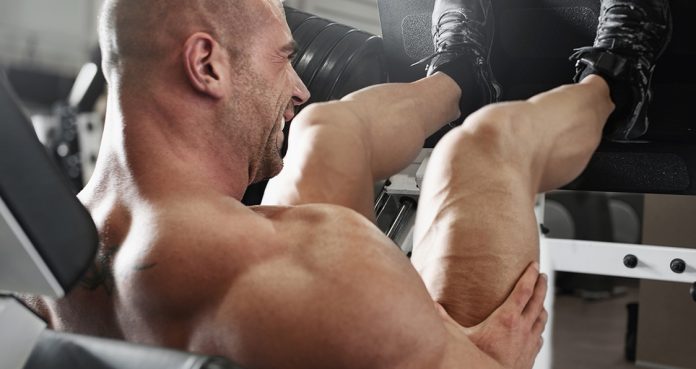
Best on the Planet – Legs Which Can Put Tree Trunks To Shame
The Biggest and The Meanest Legs In The Fitness Industry
A pair of big wheels are what separate the men from the boys. Shredded legs are a sign of dedication, commitment, and brute strength. The athletes on the list make gym bros look like electric bulbs.
For an aesthetic physique, you need to lay equal, if not more, focus on your legs as compared to your upper body and the athletes in this article are the perfect example. The next time you think of skipping leg days, these athletes will haunt you in your dreams.
Tom Platz
If you’re talking about the most insane legs in the bodybuilding world, you can’t leave Tom Platz out of the conversation. The fact that Platz had the legs he had back in the golden era of bodybuilding is nothing but insane.
Ronnie Coleman
Ronnie Coleman holds the record for the most number of Mr. Olympia title wins. He won the most prestigious bodybuilding show for eight years in a row. Coleman was a force to be reckoned with in his competitive years.
Julian Smith
Julian Smith is also known as “The Quad Guy” and we approve his choice of name. Smith follows brutal leg workouts, and he shares them with his followers on Instagram. You’ll surely be motivated to train your legs after scrolling through his Insta feed.
Branch Warren
Warren is known for his grueling workouts. He works out at the non-air conditioned Metroflex gym in Texas which goes on to say a lot about his work ethic. Branch’s legs look nothing less than tree trunks with veins.
Jay Cutler
Being crowned 4X Mr. Olympia is proof Jay is one of the best bodybuilders in the world. Jay broke all the standards with his size and conditioning when he stepped on the Mr. Olympia stage to dethrone Ronnie Coleman (another entrant on our list) for the world’s best bodybuilder title.
Kai Greene
Kai was the contender for the Mr. Olympia title for the longest of times and some people consider him an uncrowned Mr. Olympia. Kai has a unique style of training, and he includes a variety of exercises to target and develop his legs.
Dorian Yates
Dorian Yates is 6X Mr. Olympia and is the person responsible for starting the trend of pushing the human muscular size into the stratosphere. Yates dwarfed everyone when he stepped on stage and dominated the bodybuilding world for years.
Ben Pakulski
View this post on Instagram
When you look at this picture, what comes to mind? Hard work? Genetics? Steroids? One thing I Suggest you NEVER do is discount how much work went into creating something. You have NO idea the amount of time, pain, discipline, and obsession went into creating this physique. Most people will fail in life because they discount the amount of time and work it’s going to take to get accomplish their goal, so when it gets hard they crumble like dry leaves. Whatever you think it took, multiple that by 20. And the next goal you set out to crush, multiply your expectation by 100 and hope it’s even harder. Never ask for it to be easy. Ask for you to be better. Im grateful for my pain, im grateful for my struggles, they made the man I am and will continue to push harder than most people ever conceive because I’ve been dark places most people aren’t willing to go. What struggles are you grateful for? #YouCantDoWhatIDo #mi40gym #muscleintelligence #mi40 #benpakulski #mi40life
A post shared by Ben Pakulski (@bpakfitness) on May 18, 2019 at 3:38pm PDT
Ben “Pak Man” Pakulski has one of the freakiest legs in the bodybuilding industry. His quad sweep is so defined, it looks like it’s morphed. It doesn’t end here, his 23-inch calves act as the show stoppers when he turns around to hit his posterior poses.
Joey Swoll
Joey’s legs look like a ton of meat has been slapped onto them. Swoll is one of the most famous internet fitness celebrities, and his popularity is growing with time. His aesthetic physique and insane athleticism have made him a crowd favorite.
Flex Lewis
Flex Lewis is the king of legs, and only a few people can challenge him for the throne. Lewi’s legs are perfectly proportionate, have the size, and his calves look like they have a life of their own.
Header image courtesy of Envato Elements
Who do you think has the best legs?
Let us know in the comments below. Also, be sure to follow Generation Iron on Facebook, Twitter, and Instagram.
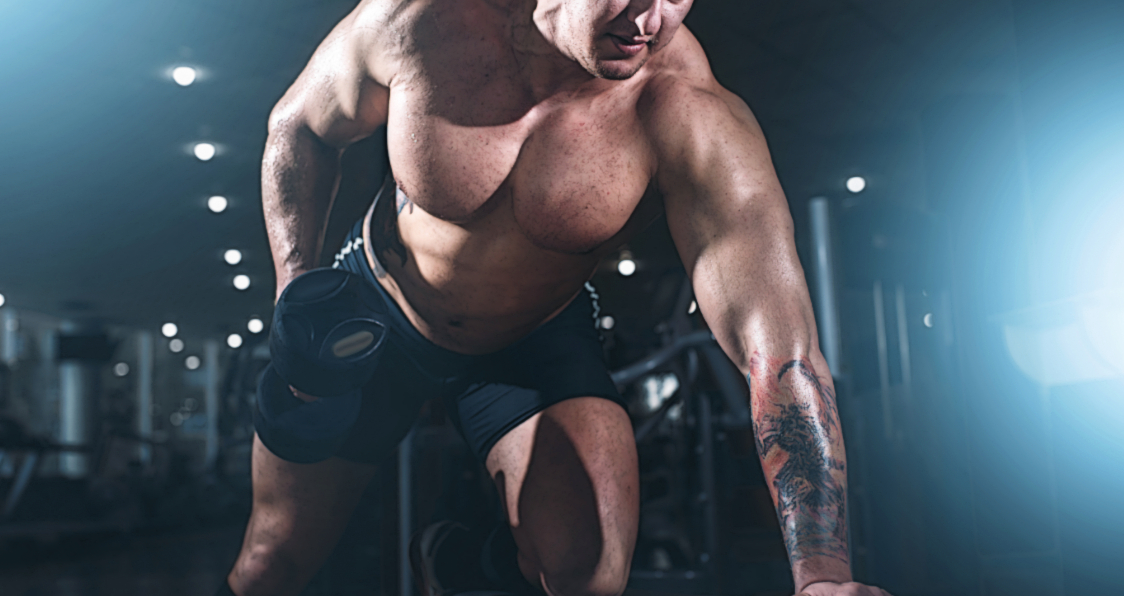
Can’t Afford The Gym? Try The Jailhouse Method
Insane gains the prison way.
In this day and age gyms are more pricey than they’ve ever been before. Many people wish to get into shape and make some serious gains, but their lack of funds keep them from being able to get into the gym and achieve their fitness goals. It can be a bit depressing knowing that you want to make a change, but can’t manage to because of economic interference.
So does that mean you might as well give up and forget about ever making some serious improvements on your body? Hell no! Though machines in the gym do help a great deal in getting your body into ripped and massive condition, that doesn’t mean you can’t make some development without them. When the tools are lacking for the task at hand, the next step is to innovate and do the next best thing. Workout without them.
This is where the concept of the prison workout can help a great deal in improving your physique. For the incarcerated, there aren’t a bunch of fancy machines or dumbbells lying around. For them to improve their strength, muscle endurance, and physique, they must rely on bodyweight exercises to make the difference. So what would a prison workout consist of? For the most part the exercises consist of pushing and pulling motions that will thrash your muscle into shape. We have a list of some prison inspired exercises that are sure to make all the difference to your routine with or without machines.
Upper Body Workout
There are a number of push up and pull up variations that are sure to work your chest, triceps, back and even your core. The key to building up a strong upper body is variety, consistency and attacking different muscle groups with the same intensity. This list of push up and pull up variations will add some variety to your routine and ensure that your muscles are attacked from multiple different angles.
Diamond Push Ups
3 sets, 20 reps
Wide Grip Push Ups
3 sets, 20 reps
Chin Ups
3 sets, 10 reps
Wide Grip Pull Ups
3 sets, 10 reps
Lower Body Workouts
The lower body workout routine is likely to look fairly similar to what you would see in the gym. The lack of weights to give added resistance is a bit of a hurdle to get around, but in exchange for the usual weighted variations, the focus should be on muscle endurance. By the time you’re ready to do a weighted squat the muscle endurance will aid you in pushing some weight.
Body Weight Squat
4 sets, 20 reps
Lunge
4 sets, 10 reps
Calf Raises
4 sets, 25 reps
But you’re still looking to build up muscle then having a training partner for these exercises can be a huge help. For instance, you can have your partner sit on your shoulders during a squat or on your back while doing a calf raise variation (donkey calf raises). They may be a bit more difficult to pull off, but if you’re in a tight situation it should do the trick for muscle growth.
Would you ever use the body weight workout in a bind? Let us know in the comments below and be sure to follow Generation Iron on Facebook and Twitter.
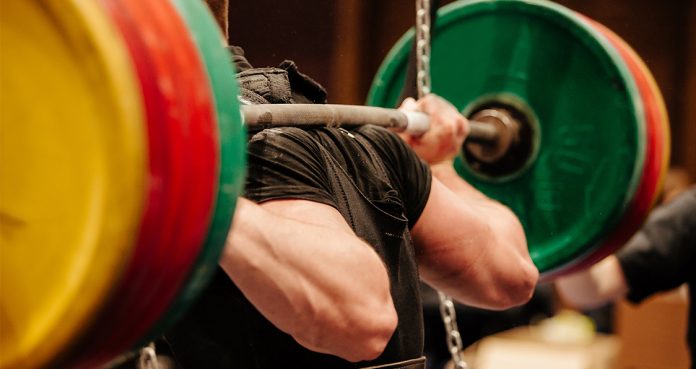
GUIDE: Become A Master Of The Squat
Why drink and drive when you can squat and fly?
The squat is one of the most natural and beautiful movements in bodybuilding. It’s also a standard position for bearing massive weight. The squat is an exercise we’ve all performed and think we’re doing right. After all there’s not much to it right? Wrong. Like all full body exercises, the squat is a movement that requires a perfect balance of many moving parts. Everything from breath to foot position should be considered before attempting this seemingly simple move. So do you want to master the squat or continue doing it half-assed like the rest of the lames at the gym? We thought so, read on.
Pre Squat
Before even attempting the squat there’s somethings you want to consider. Breathing correctly and having a straight but rigid spine will help give you stability to up your gains.
Breathing
We know it may seem monotonous and you do it without thinking anyway but being mindful of your breathing can effect not only your numbers but your life. You’d be surprise at how many times we clam up or stop breathing completely before a big task. Instead of breathing up and down try breathing in and out. Put your hand on your collar bone, if it goes up when you breath in then you’re doing it wrong. Try belly breathing, make sure your belly expands and contracts when you breathe out and in, you will physically see your rib cage going out and in when you’re doing it right.
Rigid Spine
Everyone knows you’re suppose to keep your spine straight but few people keep in mind to keep their torso rigid. This goes hand in hand with breathing, when you breathe out try and push out your obliques also. This should give you a flat stomach but visibly protruding obliques. Don’t overdo it now, it should feel fairly natural, the main thing is to make sure your center is firm and solid.
Other things to Consider
Things like lat engagement and clenching your cheeks (yes the bottom set) are also important before squatting. You can get lat engagement by simply pinching your shoulders back. The main thing to remember is that you are one solid unit, if a heavy weight was to fall on your shoulders from your standing position you should be able to bear it.
On The Bar
Now that you’ve been practicing your stance and your breathing let’s move onto the real deal stuff – the bar.
Unweighted bar
Get under the bar and get that good stance we spoke about earlier. This is where you want to work out all of your last minute kinks. So from top to bottom here’s how it goes.
Head neutral
Not to the floor, not to the sky. Find a spot where the floor meets the wall and hold your gaze.
Bend the bar
Actively pull into the bar with your two hands, this will help your posture and keep the bar tight to your body. You want your hands to be just wide enough to hold the securely behind, too lose and you won’t engage your lats.
Root your feet
You want to engage your feet but not the way you’re probably thinking. As opposed to just applying downward pressure try twisting your feet into the ground. The conscious effort to to pull your heels in will not only apply downward pressure but will pull your knees into optimal position.
At this point there’s nothing to it but to do it, or rather, the point where you’ve got to lift some heavy ass weights. We suggest you take your time and go through each of the stages we spoke about before. You’re breathing, your stance, and your on the bar last minute checklist. You’re going to notice that you’re still making some of the same mistakes but don’t be too hard on yourself, in time you will break those bad habits. We recommend you lift with a friend to make sure you’re doing all your reps correct to form. Start off small until your position becomes automatic and then start the youtube videos..
And hey – once you’ve mastered this or if you’re already a master check out the variations below to add something new to your routine.
Jump Squat
Cross your arms over your chest.
With your head up and your back straight, position your feet at shoulder width.
Keeping your back straight and chest up, squat down as you inhale until your upper thighs are parallel, or lower, to the floor.
Now pressing mainly with the ball of your feet, jump straight up in the air as high as possible, using the thighs like springs. Exhale during this portion of the movement.
When you touch the floor again, immediately squat down and jump again.
Repeat for the recommended amount of repetitions.
Kettlebell Pistol Squat
Pick up a kettlebell with two hands and hold it by the horns. Hold one leg off of the floor and squat down on the other.
Squat down by flexing the knee and sitting back with the hips, holding the kettlebell up in front of you.
Hold the bottom position for a second and then reverse the motion, driving through the heel and keeping your head and chest up.
Lower yourself again and repeat.
That about wraps it up. Follow through the guide above and you’ll be a master of the squat in no time. Make sure to hit us up in the comments with any other tips that you think makes you a master of the squat. Stay pumped.
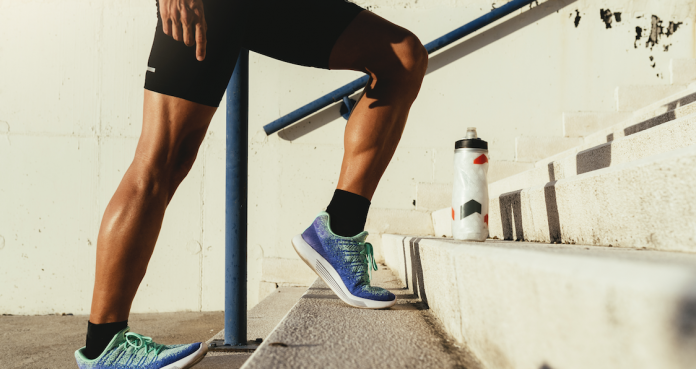
Check Out This Intense Lower Body Workout for Ripped Calves and Hams
Leg day. There. I said it.
Leg day can be one of the most challenging and often neglected aspects of being a bodybuilder. It’s confusing, it’s hard, and — let’s be honest — it wants what chest day has. Have you been training your legs for a long time but feel like your progress has stalled? Check out the intermediate lower body workout below for an excellent way to train your calves and hamstrings.
Please remember that this is an intermediate level workout intended for those who already have at least 1 – 2 years of serious strength training. We have a wide variety of leg workouts available here at Generation Iron to accommodate those who are just looking to get started.
How long should I be practicing this workout?
You can adjust the program to your level of comfort. Ideally, it should be performed for 8 weeks. However, if you’re stretched a little thin right now and don’t have that much time to get in a workout, you can modify it to be shorter and last for 6 weeks — though don’t expect incredible, long-lasting muscle to be built in that time.
Or, if you’re in a headspace where you’re really trying to motivate yourself, you can go harder and do it for 12 weeks. The most important thing is to make it work with however you’re currently working out, otherwise you won’t actually do it.
How often should I do it during the week?
You should cycle through lower body and upper body splits throughout the week however you feel most comfortable. Assuming you workout most or every day, you should consider doing this lower body workout two to four days every week, depending on how much you’re working out the other parts of your body.
Just try and match however much work you’re putting into your hams/quads with what you’re doing for your upper body and you’ll be fine. Also, make sure to take rest days in between those days so your muscles have a chance to heal.
Intermediate Leg Workout for Ripped Calves and Hams
Seated Leg Curl — 5 sets of 5 – 10 reps
Start off with a seated leg curl. Many of the muscle groups in the leg respond well to high intensity training rather than high endurance training, so it’s good to start strong and hit it hard.
Stiff Leg Deadlift — 5 sets of 5 – 10 reps
The stiff leg deadlift is an excellent modulation of the standard deadlift that really helps you feel the burn through the back of the leg and develop resistance in those muscles.
Standing Calf Raise — 5 sets of 8 – 12 reps
Moving into the calf portion of the workout, this is a great way to warm up that area of the body and build muscle.
Leg Press Calf Raise — 5 sets of 8 – 12 reps
A little bit more challenging than the standing calf raise, this helps build muscle in these groups by gradually increasing the intensity.
Donkey Calf Raise — 5 sets of 5 – 10 reps
This really encourages muscle growth in the lower leg and can be challenging at this point, so feel free to reduce the amount of sets/reps in this group to your comfort level.
Seated Calf Raise — 5 sets of 8 – 12 reps
Moving into the cool down period of the workout, this calf raise shouldn’t be skipped, since it builds the foundation for workouts to come.
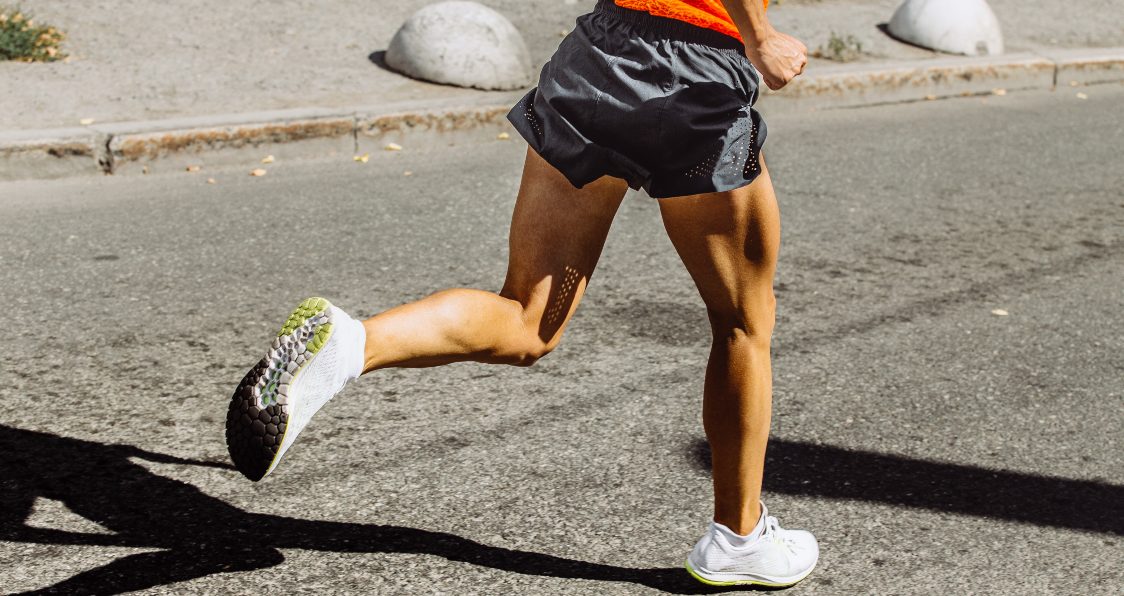
Why Bulgarian Split Squats Are Fantastic For Leg Growth
Considered the king of leg exercises, the Bulgarian split squat should absolutely be in your leg day cycle in order to enhance leg strength and a host of other benefits.
While leg day may not be your favorite lifting day, we all know how important it is to have in the workout regimen. Most of us hit the gym, stack up plates on the barbell, and get to squatting. While the squat, both front and back, are phenomenal exercises for leg growth, there is one exercise to at least consider to maximize your true lower body potential. So much time is wasted hitting various machines like the leg extension, leg curls, and hip abductors, and while those isolation exercises are good, the Bulgarian split squat will cover all of those with one mean lower body exercise that encompasses a single leg squat in the Bulgarian split squat.
Bulgarians may be difficult to do, for much of it requires strength, balance, coordination, and sheer will to even get started. But the nice part is, by adding these to your routine, all of the above listed concerns will get better with time. You’re not only focusing on one group of muscles, or one added benefit, but a host of very solid reasons why split squats should be in your workout.
The Bulgarian split squat is easy to learn and provides a good alternative to the traditional squat to relieve your body of the stress put on by that exercise. There is no need to scratch your favorite leg workouts, but just be aware that the Bulgarian split squat is one with many benefits that could save you time and is an effective single leg squat.
Let’s dive into what makes the Bulgarian split squat so special, the benefits around this exercise, and how to properly perform it to alleviate any pain or injury. When done right, this exercise has the ability to seriously enhance all of your goals and gains whether it be strength, weight loss, power, or a little bit of everything. You can perform this exercise with equipment, like a barbell, or keep it solely just your bodyweight.
Lower Body Growth In Strength, Balance, & Power
While performing any leg exercise repeatedly is bound to improve growth, we all want those results as quickly and efficiently as possible. The squat can remain the staple exercise in your leg day training session, but the benefit of splitting your squat into a unilateral movement offers diversity in your workouts, as well as offering relief to certain areas to avoid overworking and injury.
The Bulgarian split squat allows for a deeper range of movement (1) and works to strengthen the stabilizer muscles to support that deeper squat. The deeper you can fall into that squat, the more time under tension you endure. More tension results in increased growth and your gains will truly start to show.
Bulgarians target much of the lower body, including your quads, glutes, hamstrings, calves, abductors, and adductors. Much of this is a result of the demanding balance it requires to do this exercise. You can start with just your bodyweight, but as your balance, movement, and confidence improve, you will be able to add more weight to the exercise.
Pairing the Bulgarian split squat and the traditional squat together in your workout cycle is advantageous for your overall growth (2). The benefit this will have on your traditional squat will start to show as well and the leg growth from this often-overlooked exercise will shock you from a body workout.
Explosivity and power are two amazing benefits attached to leg growth and depending on your respective sport, this may be something to really aid in your training and overall performance, even with the variations. The ability to really buckle down on form and enhance your explosive power and help with any type of movement like jumping, pivoting, sprinting, and a host of others is incredibly important to propelling you to the next level.
Even if your sport doesn’t necessarily require blatant explosive power, having that enhanced muscle and ability to perform however you need to will prove to be very beneficial come the long run.
Something that this exercise can really help you with is to enhance those big lifts that are often stunted by one leg being stronger than the other. Something like a barbell squat, which is often times easy to plateau on, can be crushed by adding this exercise into your training.
Since these work each leg differently, you can target your weaker leg with more reps or more weight to isolate one over the other in order to break any plateaus, muscle imbalances, and muscular differences to make those two leg workouts reach huge growth and improved form and your best work.
Other Benefits Of This Exercise
Improved Balance & Posture
The Bulgarian split squat will be a great boost to increasing your balance. Those stabilizer muscles that can be hard to reach but all get action with this exercise and provide for better stabilization and balance. Your core will also feel this and that strong core provides a solid foundation for good balance. Good balance is also a solid way to enhance posture and fix any postural issues that may arise, especially those with a weak core.
The imbalances occur with the unfamiliarity of doing a bilateral movement. This exercise will make you focus more on keeping good form, thus increasing flexibility (3) and mind-muscle connection. Once you nail down balance, your weight load will increase and those gains will grow even more. Agility is also attached to the increased level of balance which can be beneficial for your overall growth and gains when it comes to this exercise.
Reduced Lower Back Pain
A traditional squat tends to put quite a lot of load on your lower back, which can lead to unfortunate injury and keep you out of the gym. One benefit to the Bulgarian split squat is that it limits the amount of strain on the low back.
By putting more emphasis on strengthening your legs, this exercise will largely remove the lower back from the picture and allow recovery time to avoid serious injury (4). Keep the traditional squat in mind, but the Bulgarian split squat is an additional exercise to offer some relief for your low back while not sacrificing the gains of your lower body no matter the rep or amount of sets.
Burn Calories & Shed Fat
This exercise, like every exercise, really works to get your heart rate elevated so you start to see that calorie count decrease and that unwanted fat melt off. When paired with a healthy diet and strategically placed in a training session, this exercise can seriously enhance any gains you have when it comes to weight loss and seeing that shredded physique come to life.
Convenient To Do Wherever, Whenever
This is exercise is incredibly convenient and can be done anywhere with no equipment needed. The nice part is that you can add a kettlebell or a dumbbell if you would like to add extra weight, but for most of the time, you can increase your reps and really work to target those missed areas with just your bodyweight.
No spotter is needed making this a safe and efficient workout to perform no matter wherever or whenever you need it to. As a great way to reduce your risk of injury, this exercise just what you need to stay healthy and fit overall with the convenience of doing these anywhere, very similar to a lunge.
How This Exercise Is Done
The Bulgarian split squat can be done with multiple variations, but for this we will focus on a bodyweight Bulgarian split squat. Your starting position will begin with one foot of your back leg elevated on a bench while keeping a forward position with your front foot. Hold your hands in front of you or wherever is most comfortable.
With a tight core and your torso upright, gently lower yourself into a lunge position with your foot still elevated. Make sure to keep your front knee in line with your front foot while your other foot on the bench stays put. Once at the bottom of the squat, drive your heel into the ground and push with that front leg through your front foot until it is extended again. Feel free to repeat for any desired number of reps and change legs so your opposite leg is now your front foot.
For added weight, you can use a dumbbell, kettlebell, or barbell and this can be done with trial and error. All will provide great benefit to your leg growth and squat position and the amount of weight can be easily modified.
A resistance band is also a good alternative to add tension to this exercise without dealing with weights. For a more unstable surface and increased focus on balance and strength (5), make sure you can try a Bulgarian split squat on an exercise ball and make that additional challenge for yourself.
Wrap Up
It can be difficult to will ourselves to do leg day. By boring ourselves with the same exercises, the monotony can be enough to call it a day and head to the bench press. But don’t sacrifice valuable gains by not efficiently maximizing your true leg day potential.
Adding the Bulgarian split squat to your workout routine will provide solid results and you will reach those big gains in your leg growth as a result of increased range of movement and more time under tension. By improving balance and taking added strain off your lower back and core, you increase your chances to succeed with other workouts and substantially limit your risk of injury with even more reps. Try the bodyweight Bulgarian split squat or use any other single leg exercises associated with it to really get the most out of your leg gains and athletic performance.
Let us know what you think in the comments below. Also, be sure to follow Generation Iron on Facebook, Twitter, and Instagram.
*Images courtesy of Envato
References
Drinkwater, Eric J.; Moore, Norman R.; Bird, Stephen P. (2012). “Effects of Changing from Full Range of Motion to Partial Range of Motion on Squat Kinetics”. (source)
Andersen, Vidar; Fimland, Marius Steiro; Brennset, O.; Haslestad, Lars Rune (2014). “Muscle Activation and Strength in Squat and Bulgarian Squat on Stable and Unstable Surface”. (source)
Daneshjoo, Abdolhamid; Rahnama, Nader; Mokhtar, Abdul Halim; Yusof, Ashril (2013). “Bilateral and Unilateral Asymmetries of Isokinetic Strength and Flexibility in Male Young Professional Soccer Players”. (source)
Kong, Pui Wah. “Strengthen Leg Muscles to Relieve Low Back Pain”. (source)
Aguilera-Castells, Joan; Busca, Bernat; Morales, Jose; Solana-Tramunt, Monica; Fort-Vanmeerhaeghe, Azahara; Rey-Abella, Fernando; Bantula, Jaume; Pena, Javier (2019). “Muscle activity of Bulgarian squat. Effects of additional vibration, suspension and unstable surface”. (source)
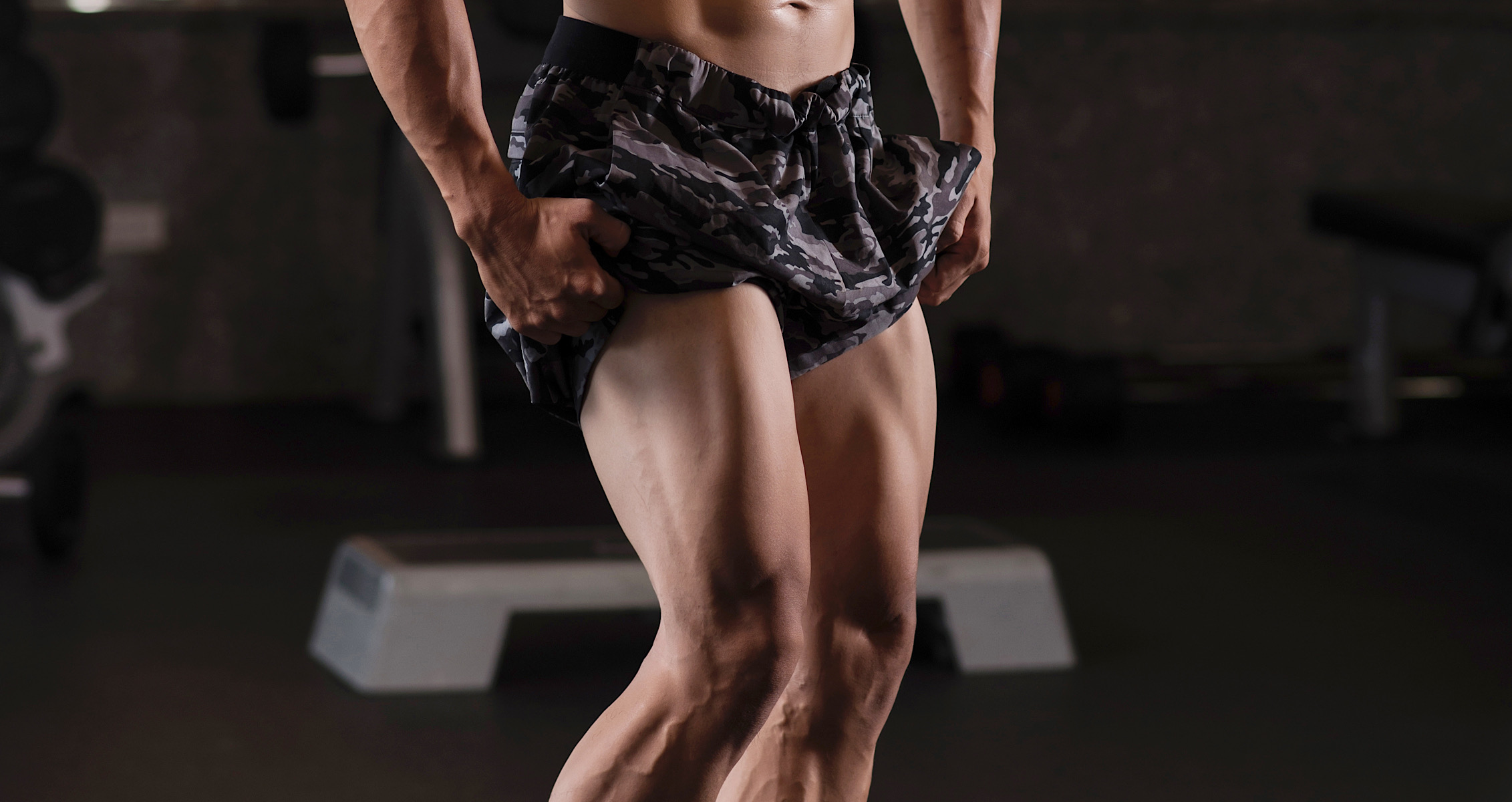
Build Bigger Quads with Bad Knees
Build Bigger Quads with Bad Knees
If “bad knees” is your excuse every leg day, I apologize in advance. You can’t use it as your crutch anymore. Depending on the severity of your knee pain (i.e. a legitimate injury vs. aching every time it rains), rest assured you can still train your quads and continue to see gains.
General Guidelines When Training with Knee Pain
• Refer out. Go to a doctor or other health professional to get a second opinion. An MRI would be ideal but can take weeks if not months to book. In the meantime, see a specialist. Take what they say into consideration and blend it with a smart approach to training.
• If it hurts, stop. This is your body telling you something’s off. Learn to listen to these signals.
• Train around it. There’s always something you can do. Knee pain is not an excuse to stop training. Find what works for you and do it (knee-friendly exercises are included in this article).
• Train your hamstrings and glutes. Most people overtrain their “mirror muscles” and undertrain their posterior chain. Strengthen your glutes and hammies for better knee support.
• Train your ankle mobility. How often do you walk into the gym and see people working on their ankle mobility? If this actually happened, knee pain would be far less common. The more mobile and strong your ankles are, the better your knees will feel.
Things to Avoid When Training with Knee Pain
• Plyometric exercises. High-impact plyometric exercises are a no-no (at least for now).
• Ballistic movements/sprinting. Similarly, running or other ballistic movements should be avoidedgiven the sheer pressure put on the knees. Your knees absorb about 8-12 times your bodyweight per stride when running. That’s a lot of force to be put on a joint with pre-existing pain.
• Olympic weightlifting. The Olympic lifts are often caught in a deep squat position with a high level of reflex out of the bottom of the lift. The springing motion out of the hole combined with heavy weights isn’t a great situation for your knees (at least for now).
• Forward and back lunges. Lunging forward then pushing your weight back to your starting position tends to put force on the front of the knee (particularly around the patellar tendon). That said, they aren’t evil. But they do place more sheer force around the knee when compared to reverse lunges.
• Max effort deep squats. Put your ego aside for a moment and take a break from the max effortsquats. All things considered, you can still squat onto a high box and alleviate some of the demand on your knees.
Knee-Friendly Exercises for Bigger, Stronger Quads
1. Airdyne
Yeah, cardio sucks. But the Airdyne is a great way to pump blood to your quads during your warm-up while keeping your knees in a stable position. The higher your seat, the less your knees have to bend. Find a height that works for you so you can pedal without knee pain. Do a steady 3-5 minutes before lifting. You should be sweating and feel your quads blow up when you’re done.
2. TKE (Terminal Knee Extension)
This subtle movement packs a punch provided you do it optimally.
Loop a resistance band around a squat rig or something sturdy and have the other end behind your knee. Back up until you feel the band pull your knee forward and perform the TKE by bending your knee slightly and extending it. You should be focusing on your quad/VMO as much as possible here.
Perform 15-20 reps for 2-3 sets each side at the beginning and end of your workouts.
3. Monster Walks
Glute work isn’t a common line of action when dealing with knee pain, but it should be. Stronger glutes improve hip and thigh alignment, reducing the sheer force placed on the knee.
Insert monster walks.
You can perform monster walks laterally (side to side) for glute engagement, or backwards for quad destruction.
For glute engagement, place a Hip Circle around your knees and bend them slightly with your feet pointed forward. Take small steps to the side while keeping constant tension on the band. Resist the urge to let your knees cave in by keeping your hips externally rotated and press out against the band throughout your set.Take 5-10 steps to the right then 5-10 steps to the leftfor 3-4 sets.
The second option is to place the band around your ankles and walk backwards with small micro steps, pumping blood to your quads. Take 10-20 steps backwards for 3-4 sets.
4. Box Squat
Squatting onto a box takes a lot of the pressure out of your knees while providing depth indication. The box (or bench) should be high enough so your hip crease is slightly above your knee when you sit onto it (i.e. your thigh should be higher than parallel with the floor). This will allow you to continue to squat relatively heavy provided you don’t feel any pain in the knees when doing so. That said, this isn’t an excuse to use an absurdly high box and crank out max–effort-ego-quarter squats. Find the range of motion you can perform a pain-free squat in and load it accordingly.
5. Reverse Lunge
Reverse lunges just feel better on the knees, given the relatively vertical angle of the tibia (shin). Granted, your knees have to travel past your toes for most daily and athletic activities. But as mentioned, forward/back lunges tend to put more sheer force on the knees overtime (especially if you have pre-existing knee pain). For this reason, I tend to favour reverse lunges in most of my programming.
6. Reverse Sled Drag
Attach a TRX or suspension trainer to a sled. With your arms straight, hips back, and core braced, walk backward with small micro steps. This is similar to a loaded high-rep TKE and minimizes the force placed on the knees while brutally attacking the quads.
You can perform reverse sled drags at the beginning of your workouts as part of your warm-up or at the end as your finisher.
The Workout: Putting It All Together
A1. TKE (Terminal Knee Extension): 3 sets of 15-20 each leg
A2. Lateral Monster Walks: 3 sets of 10 each direction
Rest 30-45 sec after A1 and A2 have been completed.
B. Box Squat (High Box): 3 sets of 6-10
Rest 2-3 min between sets.
C. Reverse Lunge: 3 sets of 8-12 each leg
Rest 1-2 min between sets.
D. Reverse Sled Drag: 3 sets (walk full length of turf strip and back)
Rest 1-2 min between sets.
Additional Considerations
• Always warm up beforehand. This goes without saying and should be a ritual for all of your workouts, whether or not you have knee pain.
• Ankle mobility between sets. Limited ankle mobility is usually the leading cause of knee pain. Get those reps in and work it in between sets.
• Soft tissue work for quads/IT band between sets. More often than not, rolling out your IT band will help reduce your knee pain. Include it in your warm-ups and do it between sets to maximize recovery.
• Shy away from the leg extension machine. Meatheads love the leg extension given the direct pump it provides for the quads. It’s also a big no-no when overused in conjunction with pre-existing knee pain. Stay away from it (at least for now).
Summary
Knee pain sucks but it’s not an excuse to sit on your ass. Treat it as an opportunity to strengthen your weak areas and train smarter moving forward.
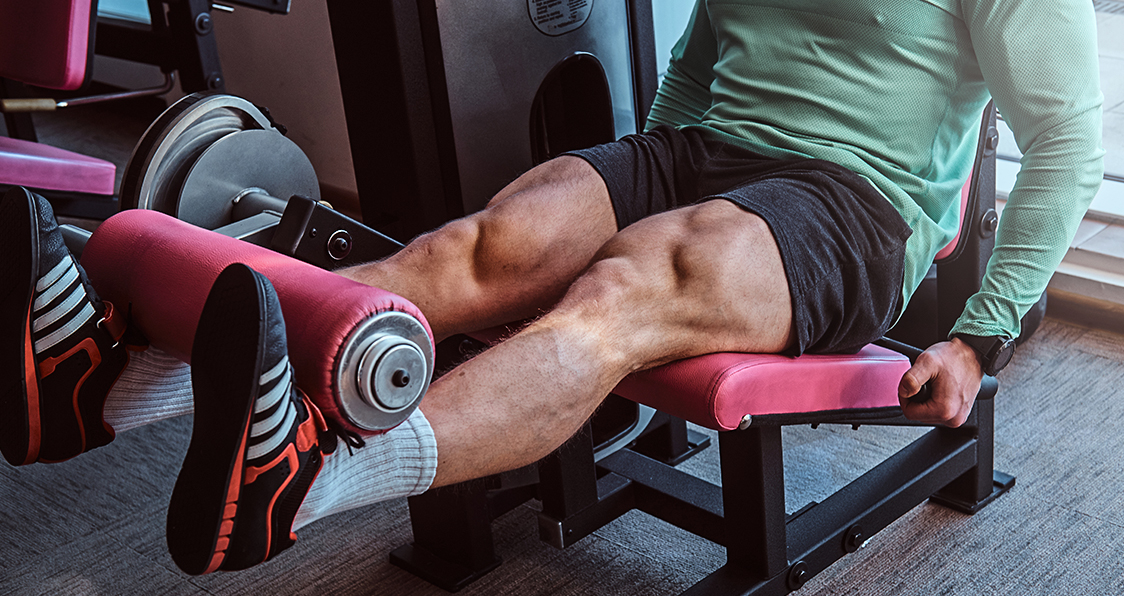
Let’s Revive This Forgotten Way of Building Monster Legs
Let’s Revive This Forgotten Way of Building Monster Legs
Remember when legs were everyone’s favorite muscle to train? We neither. Training legs, if done right, can be taxing. One big reason for exhaustion while hitting your wheels is that your legs are half of your body, and most of your blood and oxygen are pumped into them while training, leaving your brain and lungs running on fumes.
With the introduction of fancy training equipment like the seated hamstring curls, abductor, and adductor machines we have seen a big change in the leg workout routines. Make no mistake, we are not implying that people these days don’t have great legs.
Heck, pro bodybuilders on stage these days are arguably the freakiest since the advent of bodybuilding and we don’t mean this negatively. Most people attend bodybuilding shows to watch the freaks of nature in action and the guys on stage deliver on those expectations.
This article is not a comparison between the golden day and today’s bodybuilders. It’s aimed at pointing out the change in the leg training style over the years and to see if going back to the old ways can improve leg development.
Building Monster Legs The Old School Way
Our old-school quadzilla idol is none other than Tom Platz. If you’ve ever seen videos of Platz training legs, you’d realize it’s nothing like what we see in today’s YouTube leg training motivational videos.
Tom Platz’s leg workouts were so brutal that people attended his leg training sessions to learn his techniques and most people looked in awe when he got under the bar or sat on the leg-extension machine.
If you’ve ever watched the critically-acclaimed movie, Pumping Iron, how many bodybuilders did you spot using the abductor or hip-thrust machines? Could you complain about the wheels of any of the bodybuilders shown in the documentary?
Going Old School – Higher Reps
Coming back to Tom Platz. One of Tom’s biggest pieces of advice is, “the quads need higher reps than other muscle groups, like 15-20 or more to grow.” When was the last time you performed 15-20 reps of something while training legs?
These day’s we see a complicated system where people use a percentage of 1RM to determine how much weight they’d be lifting in a set. Don’t get us started on how to calculate a one-rep-max.
Most people deliberately underperform on a 1RM to set the bar low so that they can post fancy numbers on social media. Calculating 1RM can be complicated, and if you don’t want to open an excel sheet or a graph chart, you’d be better off doing what Platz did, perform higher reps.
Benefits of Higher Reps
Some people think that higher reps translate to lighter weights. This isn’t exactly true. Many lifters on a gaining program think that lifting light for higher reps is for people on a ‘cutting’ schedule.
On the contrary, lifters on a shredding routine think that lifting heavy for a lesser number of reps will make them bulky. Both these approaches are as far away from the truth as they can be.
Time under tensions (TuT) is one of the most important factors in adding muscle mass as it leads to the breaking of muscle fibers while training. With proper rest and diet, these broken muscle cells grow out to be bigger and stronger. The shorter your sets are, the lesser will be the tension on your muscle fibers.
Lifting Heavy is IN!
In today’s internet age, squatting 405lbs for 2 reps is way sexier than lifting 225lbs for 20 reps. Don’t believe us? Open your Instagram and look for an internet fitness celebrity who lifts moderate weights for higher reps.
Most of the content creators these days are chasing strength while undermining the importance of endurance. It maybe has something to do with the “go heavy or go home” mindset, which has its place but kills the benefits of time under tension.
Lifting super-heavy is undoubtedly hard but bearing the pain of high-rep quad exercises is not for the weak-hearted. 20 repetitions of squats will introduce you to soul-grinding, hypertrophy-inducing pain.
The Golden Age Leg Building Technique
Enough with the chatter, let’s get down to the business of building monster legs. Although we have spoken a lot about squats in this article, leg press, hack squat, leg extensions, and leg curls machines are great leg-building tools.
Quad Focussing Leg Press Workout:
1. Place your feet close to the bottom of the sled. Use a close-feet stance and push mainly through your toes rather than your heels to focus on your quads and limit the involvement of the hamstrings.
2. Close your eyes, shut your mind and go for 25 reps. Make sure you follow a full range of motion. Partial reps are going to do you no good. If you fail at around 15-20 reps, lighten the load and complete 30 reps. Getting the weights right for 25 reps is going to take 2-3 trial runs.
3. Perform three sets of these “sissy” sets. But it doesn’t end here. Put on some plates on the sled and do one final set of 8-10 reps. We’re here to get the best of both worlds, remember?
You can follow this same technique for all your leg exercises like squats, leg curls, extensions, and hack squats.
Leave Your Brains at Home Technique
There is another Tom Platz technique for building monster legs that are hidden away since the Instagram fitness models took over – the ten-minute sets. Tom Platz once put 225lbs on the bar and performed squats for 10 minutes straight – without stopping.
Before you lose your shit, we’ll be the first to admit that this technique needs some tweaking. How about we turn the ten-minute sets into two-minute sets? We knew you’d like that.
P.S – you don’t have to stick with the lighter weights for higher reps philosophy. You are free to test your mettle by squatting heavier weights for higher reps.
P.S.S – by higher reps, we mean up to 50 reps.
P.S.S.S – maybe it’s time to change the conversation from “how much can you squat?” to “for how long can you squat?”
For how long can you squat, bro? Let us know in the comments below. Also, be sure to follow Generation Iron on Facebook and Twitter.
